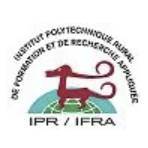Introduction to the University of Science, Technique and Technologies of Bamako:
Introduction
The University of Science and Technology of Bamako is a public university in Mali, located in Bamako, the capital of Mali, and provides educational courses at multiple levels in the fields of science, technology and culture.
History and establishment time
The university was formerly the University of Mali, established in 1993, and renamed the University of Bamako in 2002. On September 28, 2011, Decree No. 2011-020/PRM was passed, and the University of Bamako was split into four thematic universities, one of which is the University of Science and Technology of Bamako.
School strength
Faculty: Although there is no specific public data, as an important institution of higher learning in Mali, the school has a team of teachers with rich teaching and scientific research experience, covering multiple disciplines.
Teaching resources: The school has teaching facilities such as libraries and laboratories, providing students with better learning and research conditions. Among them, the library has a large number of professional books, journals, research reports and other materials; the laboratory is equipped with relatively advanced instruments and equipment, which helps students to carry out practical operations and scientific research.
Nature of the institution
A public university funded by the government, it aims to cultivate high-quality professionals for the country and promote the development of science, technology and culture.
Educational philosophy
There is currently no public information about the school's clear educational philosophy, but public universities usually focus on cultivating students' comprehensive qualities and innovative abilities, emphasizing the combination of theory and practice, and are committed to cultivating talents with solid professional knowledge, good moral qualities and social responsibility for the society.
Key laboratories and disciplines
Key laboratories: The Mali International Center for Excellence (Mali-ICER) is an important research institution of the school, including the Malaria Research and Training Center (MRTC). Founded in 1992, the center is one of the largest research centers in Africa, with outstanding research results in vector epidemiology and biology, malaria parasites and other vector-borne diseases. In 2015, the university also established the University Clinical Research Center (UCRC) as a collaborative clinical research center between the university and the Malian Ministry of Health, the Ministry of Higher Education, and the Clinical Research Department of the National Institutes of Health to support general biomedical research and training in Mali.
Key disciplines: Medicine, Dentistry, Pharmacy, Applied Mathematics, Geology, Microbiology, Biochemistry, Natural Sciences, Biology, Physics, Chemistry, Computer Science, etc.
Faculty
Faculty of Medicine and Stomatology (FMOS): Provides courses in medicine and stomatology.
Faculty of Pharmacy (Fa Ph): Covers professional education in the field of pharmacy.
Faculty of Science and Technology (FST): Includes applied mathematics, geology, microbiology, biochemistry, natural sciences, biology, physics, chemistry, computer science, etc.
Institute of Applied Sciences (ISA): Covers applied chemistry, bioengineering, electrical engineering, computer engineering, etc.
Ranking
In the 2024 World University Rankings, the university ranks 10262nd and 1st in Mali.
Fees
The school's official website does not currently disclose specific tuition and other fee information, but it may vary depending on the major and degree level.
Campus Environment
The campus is located in Bamako, with convenient transportation. The campus is tree-lined and beautiful, with relatively complete teaching and living facilities, providing students with a good learning and living environment. The school has teaching buildings, libraries, laboratories, canteens, dormitories and other places to meet students' daily needs.
-

University of Science, Technique and Technologies of Bamako
-

University of Law and Political Science of Bamako
-

Abderhamane Baba Touré National School of Engineers
-

Rural Polytechnic Institute of Training and Applied Research of Katibougou
-

Mesoamerican University
-

Istmo University
-

Mariano Galvez University of Guatemala
-

Regional University of Guatemala
-

Galileo University
-

Francisco Marroquín University
-

Rafael Landívar University
-

University of the Valley of Guatemala
-

University of San Carlos of Guatemala
-

Technological Institute of Tlaxcala Plateau
-

Golfo University
-

Technological University of South Sonora
-

Technological University of Huejotzingo
-

Tizimín Institute of Technology
-

Chilpancingo Institute of Technology
